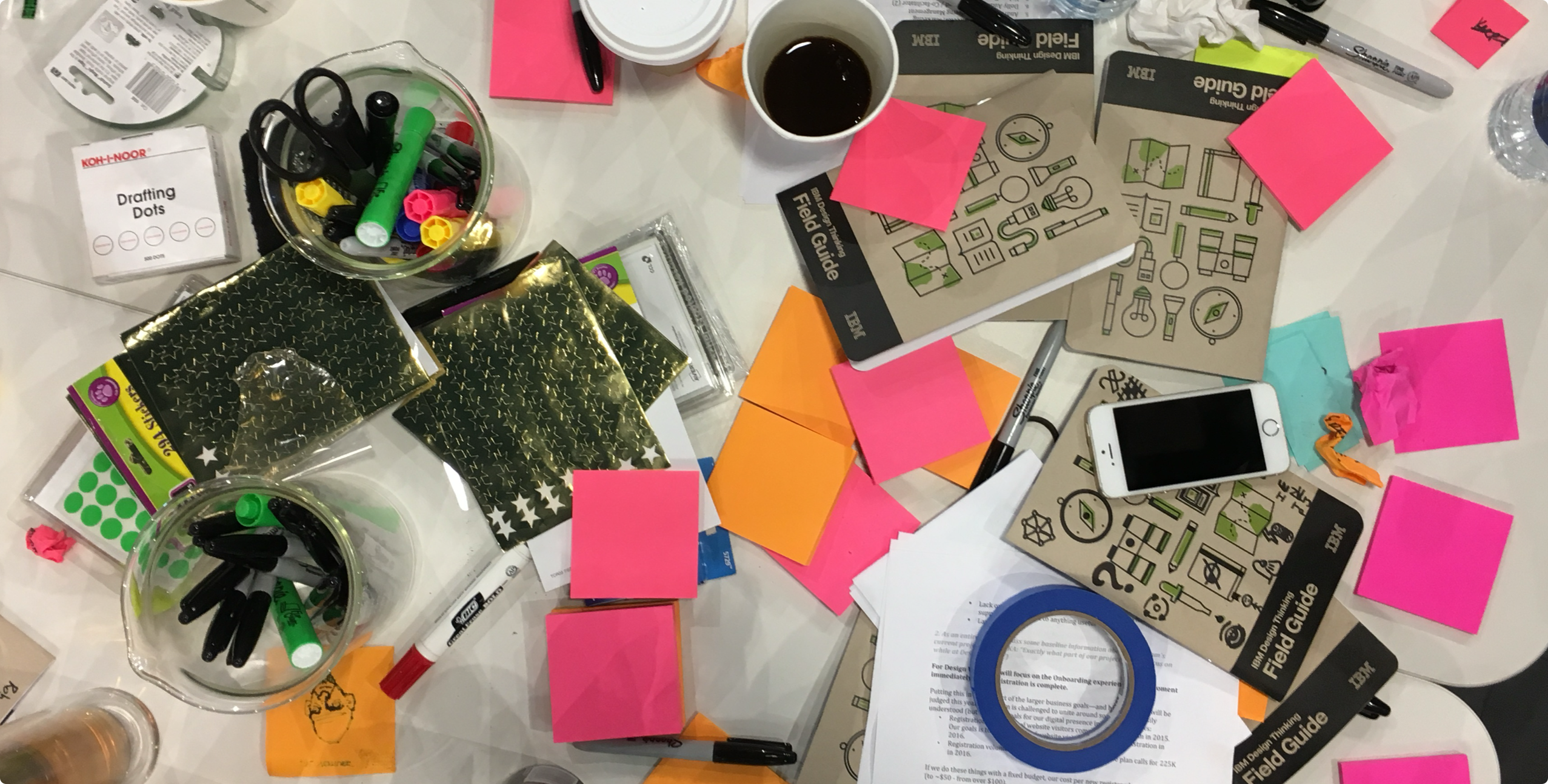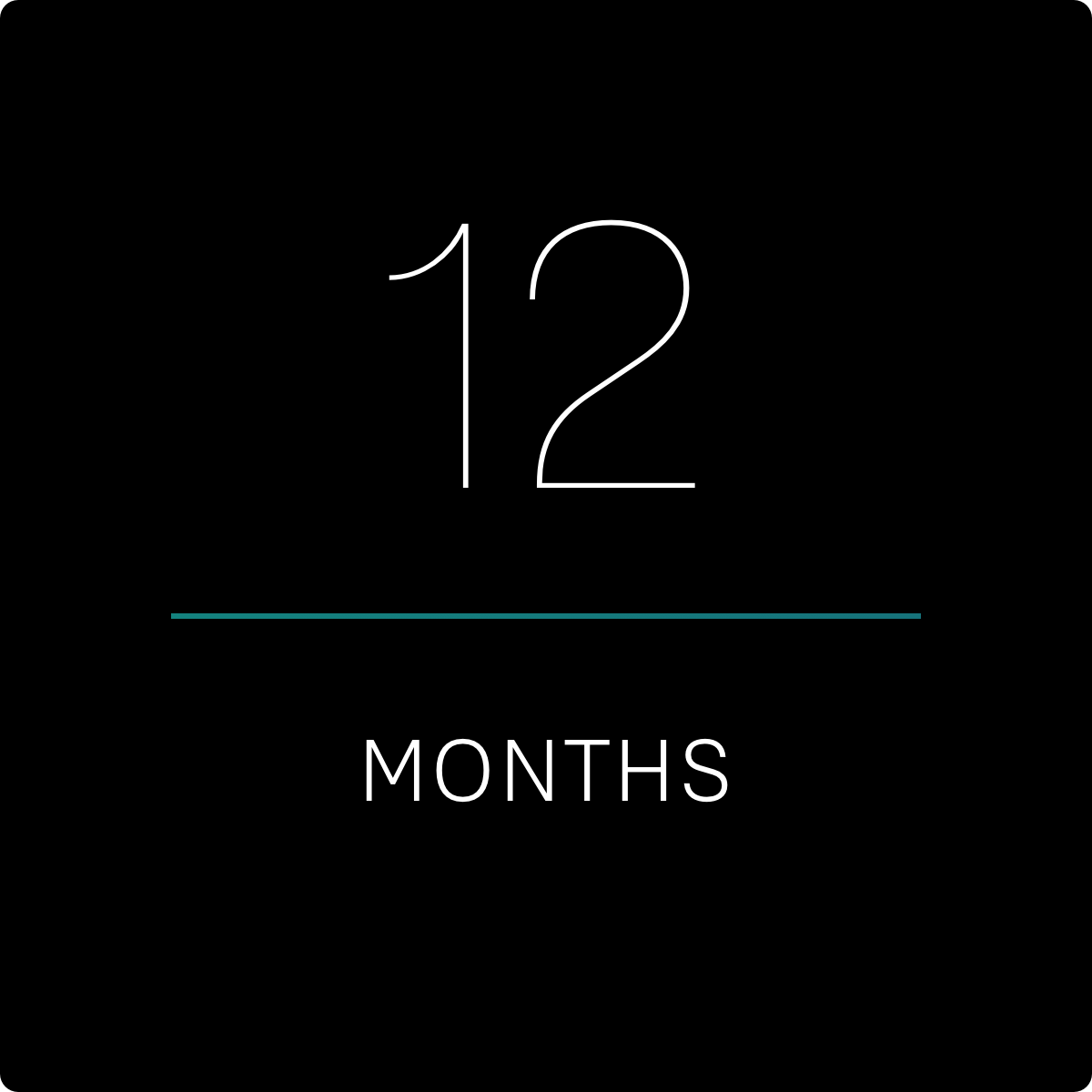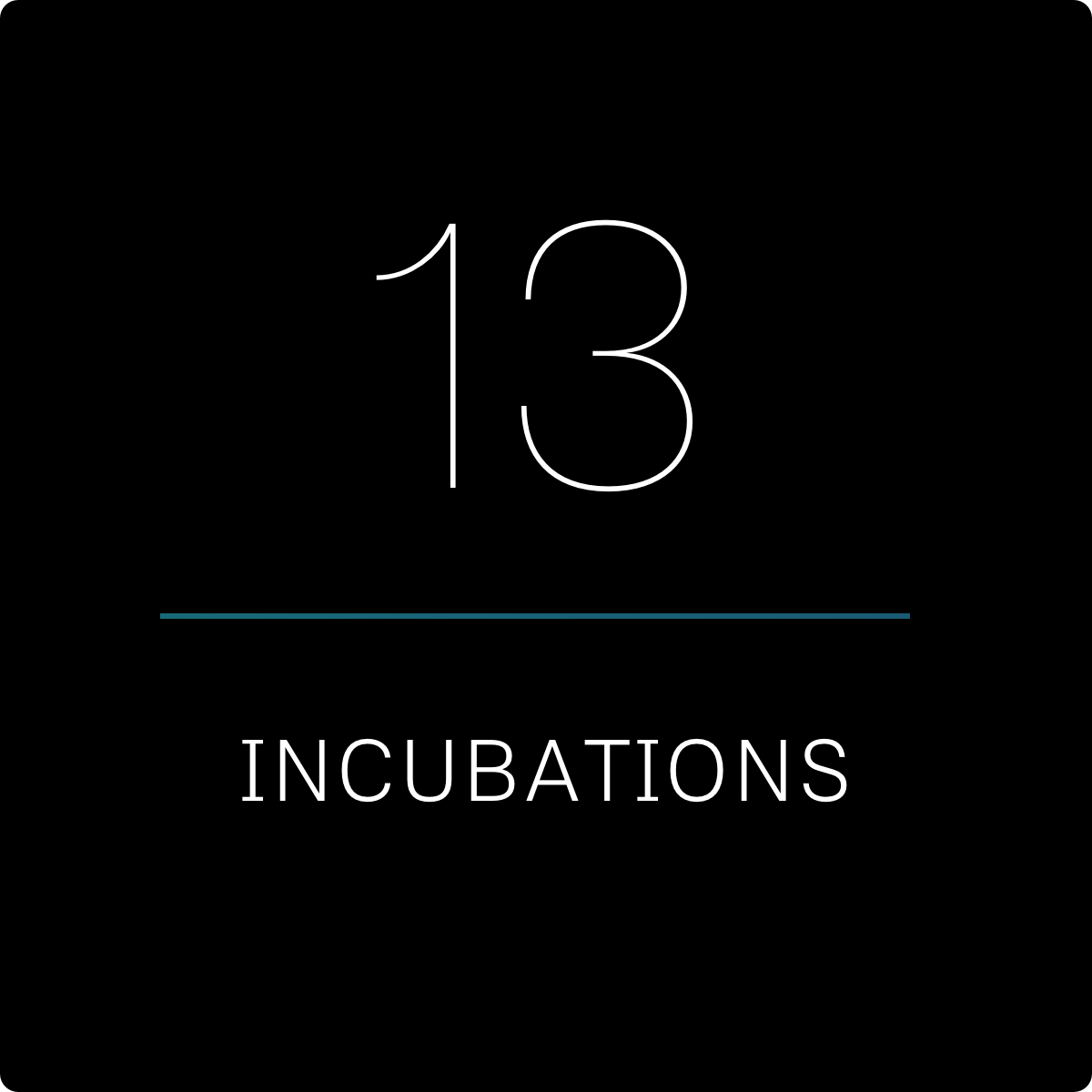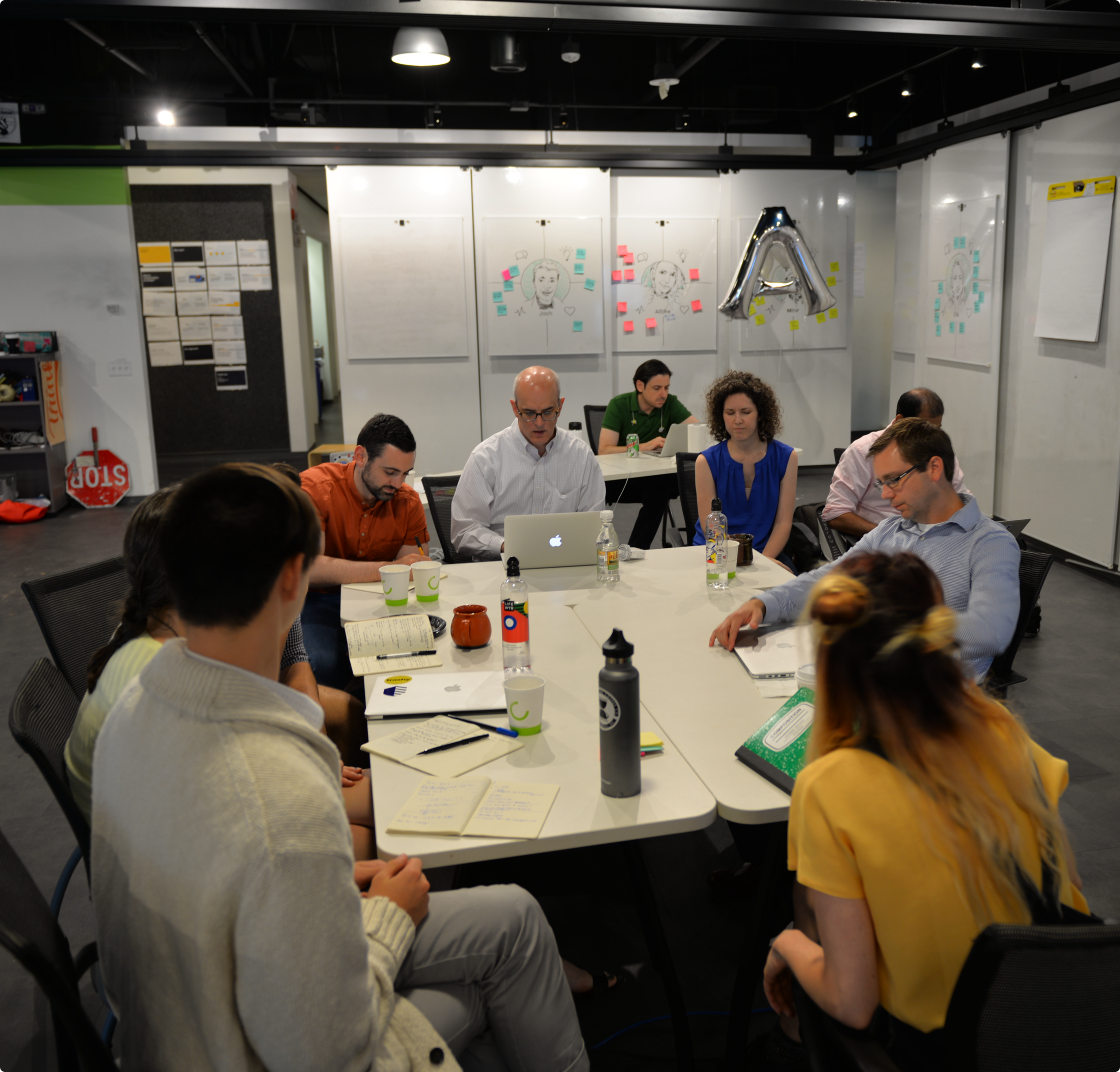
IBM Incubator Program
Innovation, prototyping & cross-disciplinary process engine
The IBM Incubator Program is two-fold: one part innovation and functional prototype driver and one part Enterprise Design Thinking training for incoming IBMers.
ROLE
Program Lead – Sourced projects for incubation. Led both stakeholder and design teams in planning, researching, designing and delivering thirteen IBM product innovations.
TEAM
40 – User Experience Designers
21 – User Researchers
12 – Content Designers
18 – Product Managers
11 – Front-End Developers
Program Lead – Sourced projects for incubation. Led both stakeholder and design teams in planning, researching, designing and delivering thirteen IBM product innovations.
TEAM
40 – User Experience Designers
21 – User Researchers
12 – Content Designers
18 – Product Managers
11 – Front-End Developers




The IBM Incubator Program (now known as PATTERNS) is based in Austin, TX but sources projects from IBM teams across the globe for incubation. The program runs year-round, encompassing multiple project sizes (four to six weeks).
The program is targeted toward interns, new graduates and professionals with one to two years of experience. Each project pairs a cross-disciplinary team of new IBMers with a project sourced from IBM business units for incubation.

At the height of the IBM Design program product teams were growing rapidly. In response to the demand, designers were being hired in cohorts of 80+ two to three times per year. These cohorts of new IBMers would begin their career in a three-month Design Bootcamp which would teach them IBM Enterprise Design Thinking before deploying to their full-time product team.
The finale of the program was a six-week project working with stakeholders from an IBM business unit, collaborating to solve a real user experience problem for the team, leading research with their customers and creating an innovative, functional prototype as the final deliverable.
The finale of the program was a six-week project working with stakeholders from an IBM business unit, collaborating to solve a real user experience problem for the team, leading research with their customers and creating an innovative, functional prototype as the final deliverable.
With each cohort I led multiple teams of designers and thus would source multiple projects from different IBM teams for the designers to work on. Sourcing was a critical step to ensure stakeholders would be properly engaged throughout the program, were open to the Enterprise Design Thinking process and were open to new outcomes (vs bringing a solution along with their project).
Bi-Directional Management
—
As Program Lead I was responsible for leading the design team on a daily basis, coaching them toward their weekly and cumulative outcomes. Additionally I was responsible for managing stakeholder expectations, shielding the designers from distractions and backing them up when presenting controversial reserach findings.
—
As Program Lead I was responsible for leading the design team on a daily basis, coaching them toward their weekly and cumulative outcomes. Additionally I was responsible for managing stakeholder expectations, shielding the designers from distractions and backing them up when presenting controversial reserach findings.
Driving Innovation
—
Being that innovation was the goal for each incubation, I was always careful to ensure we were chasing leaps forward vs incremental improvement. This partly took place in project selection, selecting teams and problems complex and impactful enough that a leap forward can be achieved. The rest took place during incubation where I would appropriately focus the team on what would drive the biggest improvement for users and impact for the business.
—
Being that innovation was the goal for each incubation, I was always careful to ensure we were chasing leaps forward vs incremental improvement. This partly took place in project selection, selecting teams and problems complex and impactful enough that a leap forward can be achieved. The rest took place during incubation where I would appropriately focus the team on what would drive the biggest improvement for users and impact for the business.
Functional Outcomes
—
Once the team had enough understanding, insight and context the rest was largely an endeavor in time and project management. While each week had its own deliverable, I was careful to keep the team focused on how all the deliverables added up to the final deliverable and ensuring they were budgeting time appropriately to execute final designs, presentation and building their functional prototype.
—
Once the team had enough understanding, insight and context the rest was largely an endeavor in time and project management. While each week had its own deliverable, I was careful to keep the team focused on how all the deliverables added up to the final deliverable and ensuring they were budgeting time appropriately to execute final designs, presentation and building their functional prototype.
